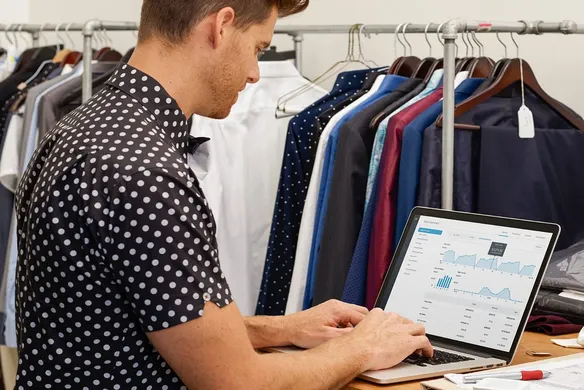Table of contents
Email threads and verbal promises with your suppliers may have worked when you were first starting out. But now that your business is booming, sourcing supplies might be harder to manage.
If this sounds like the current state of your business, you may want to consider using a purchase order. Here’s what you need to know about the purchase order process.
What is a purchase order?
A purchase order is the official document between a supplier and a buyer that communicates product specifications and defines the expectations of the business transaction. Purchase orders can detail a variety of requirements, including the type of product, quantity, price, and an outline of delivery.
Whether you’re the buyer or seller, this legally binding contract is intended to protect all parties involved. The seller is protected should the buyer refuse payment. It also protects the buyer in the instance that the seller doesn’t deliver the goods or services.
You might use a purchase order, or PO, to buy products or services from an external supplier. Or you might be the external supplier and receive a PO when someone is buying from you.
Why should you use purchase orders?
Purchase orders communicate the buyer’s needs and define the expectations of the business transaction. Because it’s a binding contract, it protects the seller should the buyer refuse payment. It also protects the buyer if the seller does not deliver the goods or services (or if they deliver the wrong goods or services). A purchase order is legally binding, so make sure you consult with a legal expert to ensure any purchase order you’re working with meets your specific needs.
What is the purchase order process?
During the purchase order process, the buyer is the one to prepare a purchase order. It should include the PO number associated with that order, the shipping date, billing address, shipping address, product request, quantity, price, and any other information that is critical to complete the order.
If you’re the buyer, you should create the PO and then send it to your supplier. Once you receive the inventory or services from the supplier, it should be logged into your purchase order system and marked as processed. Finally, if the inventory or services meet your expectations, pay the supplier to complete the purchase order process.
What is the difference between a purchase order and an invoice?
Purchase orders and invoices are important documents for any business, and yet they are frequently confused.
The key difference between a PO and an invoice is who is creating the document. A buyer creates a purchase order to be fulfilled by a supplier. A supplier or seller prepares an invoice for the service and is then paid for those services.
When used correctly, invoices can get your business paid faster. An invoice is a record of the goods or services you provided to your customer, and it’s a method for them to pay you for your work.
It is important to send invoices promptly, so people are billed in a timely manner and so get your invoices paid fast. And now with digital purchase order options and Square invoices that can be done online, it’s easier than ever.
Other common questions about purchase orders
What is a purchase order number?
Purchase order numbers are unique identifiers that match the order to the invoice (both should contain the same number) to help you reference, track, and organise your orders and payments.
How to create a purchase order
It’s easy to create a purchase order from your Square Dashboard in the inventory management section. Fill in the required fields and save as a draft until you are ready to send to vendors. You can email the purchase order directly to them through the purchase order system when it’s complete.
How to raise a purchase order and how to write a purchase order
Prepare a list of the information you will need including vendors, items, quantities, and costs. Once you have this in hand, work off a purchase order template to easily raise, manage, and send new purchase orders.
Managing purchase orders
While it sounds pretty straightforward, a purchase order can complicate your supply chain process. As a buyer, it’s important to invest in your retail inventory management and learn how to effectively manage your suppliers.
Here are a few tips that can help as you learn how to create a purchase order process:
- Go big
Ordering in bulk can help you make the most of discounts and save a lot of money. And when done correctly, you’ll be able to cut the cost per unit of your items. Of course, ordering in bulk means spending more up front, so you only want to do this if your business is stable and you are practicing proper small business inventory management. - Be prompt
Send your invoices, purchase orders, and vendor service contracts in a timely manner. It’s important to get these documents in your partners’ hands because they define the terms of agreement and protect your business. In addition, promptly sending documents shows a degree of professionalism that will instil confidence in your partners. One way to ensure a prompt purchase order process is to send invoices online. - Empower employees
Try implementing a purchase requisition system into your business. This enables employees to request the materials they need to do their jobs. Not only does this empower your team, but it also gives you a better idea of the materials needed and can help shape the right purchase order format to secure a smooth-running business.
![]()











